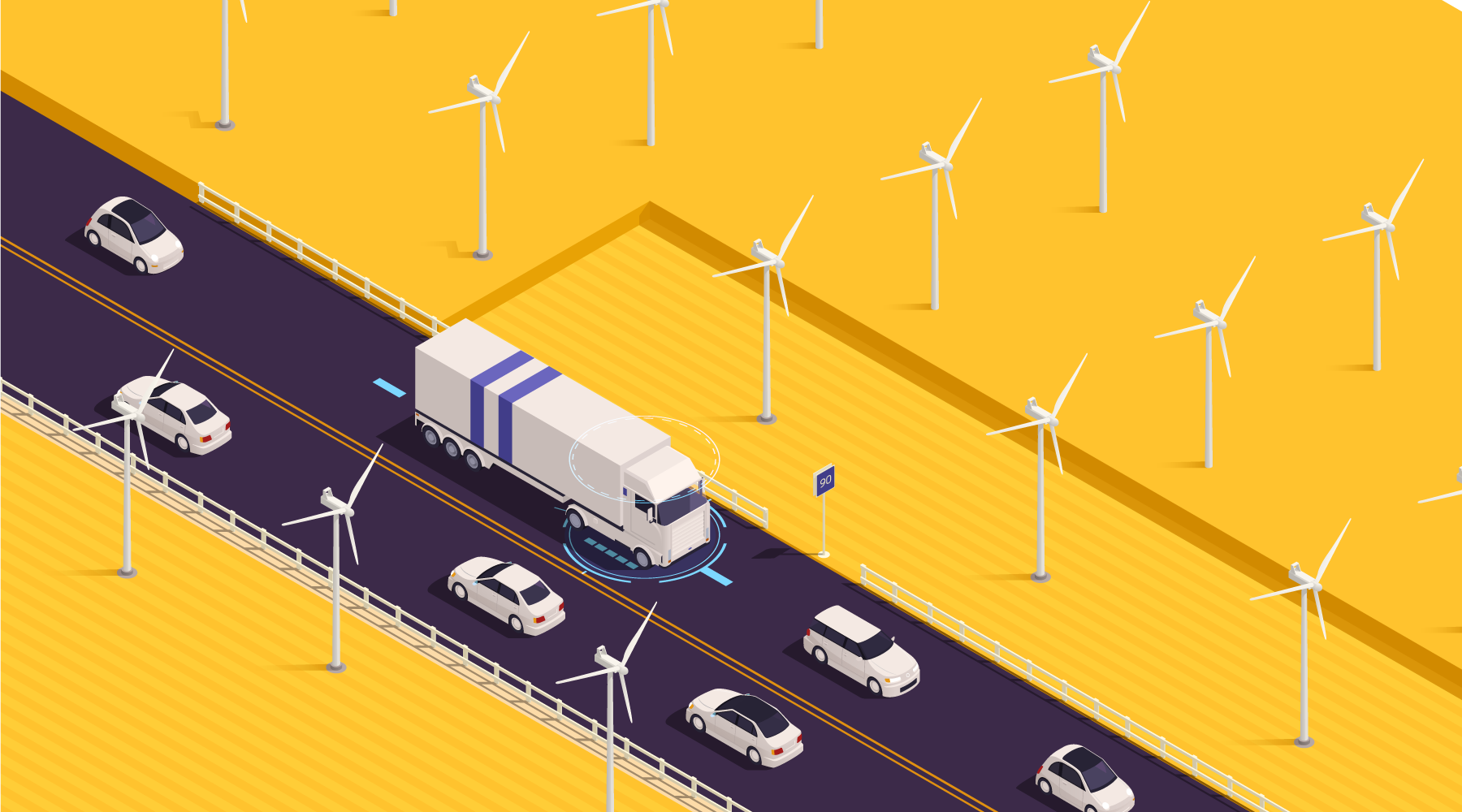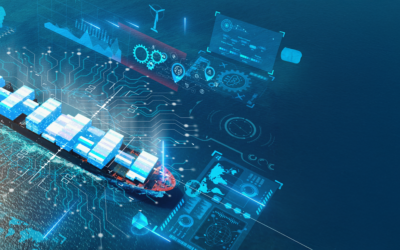Revolutionizing Transportation with IoT
5 min read
Summary:
IoT in transportation is transforming the way we commute, manage fleets, and maintain roads. This technology has the potential to significantly improve traffic flow, public transit, and vehicle technology.
This blog post explores how IoT revolutionizes transportation through connected vehicles, intelligent transportation systems, and smarter fleet management.
How IoT works in transportation
The IoT in transportation involves using IoT devices and communication technologies to connect vehicles, infrastructure, and users. As a result, vehicles can communicate with each other and the surrounding infrastructure, resulting in a more efficient and safer transportation experience.
Benefits of IoT in transportation
Using IoT offers numerous benefits to the transportation industry, including improved safety, reduced congestion, and better fleet management.
Accident prevention
IoT-enabled vehicles can communicate with each other and share information about their speed, location, and direction of travel. This data exchange enables vehicles to anticipate and avoid potential collisions. In addition, connected vehicles can communicate with traffic signals and other infrastructure elements to optimize traffic flow and reduce the risk of accidents.
Reducing congestion
Intelligent transportation systems equipped with IoT technology can optimize traffic flow by adjusting traffic light timing, directing traffic away from congested areas, and providing real-time information to drivers. This enables better traffic management and less congestion, resulting globally in shorter travel times and greater fuel efficiency.

Smarter fleet management
IoT fleet management systems can significantly improve the efficiency of fleet operations. By collecting data on vehicle location, driver behavior, and vehicle condition, fleet management software can help fleet operators make informed decisions about route planning, maintenance, and driver performance. This leads to cost savings, lower emissions, and improved safety.
There are several ways IoT technology can improve fleet management:
Real-time vehicle tracking: IoT devices allow fleet operators to monitor the location and status of every vehicle in their fleet, enabling better asset utilization.
Optimized route planning: By analyzing traffic patterns and other data, IoT systems can suggest the most efficient vehicle routes, reducing fuel consumption and travel times.
Predictive maintenance: IoT sensors can monitor the condition of vehicles, allowing fleet operators to anticipate maintenance needs and proactively schedule maintenance to reduce downtime and repair costs.
Better monitoring of driver performance: IoT technology can record driver behavior such as speed, braking, and idling. This information helps fleet operators identify areas for improvement and implement training programs to improve driver safety and efficiency.
Fuel management: IoT devices can monitor fuel consumption and identify optimization opportunities to reduce fuel costs and emissions.
Compliance and reporting: IoT systems can automate the collection and reporting of data required for compliance, such as hours of operation and vehicle inspections, reducing administrative burden.
By leveraging IoT technology, fleet managers can optimize their operations, resulting in significant cost savings, improved safety, and better overall performance.
How ITS works
Intelligent Transportation Systems (ITS) refers to the integration of advanced communication technologies, IoT devices, and data analytics to improve efficiency, safety, and sustainability in transportation.
ITS encompasses many applications, including traffic management, public transportation, and logistics. These systems use data from connected vehicles, infrastructure, and users to make and automate real-time decisions to improve the overall transportation experience.
Some examples of ITS applications include:
Adaptive traffic signal control, which adjusts signal timing based on traffic conditions
Traffic incident management, which detects and responds to accidents and other incidents
Real-time travel information, which provides drivers and users with up-to-date traffic and route information
Public transit management that optimizes routing and schedules for buses, trains, and other public transit systems
Electronic toll collection and congestion pricing reduce the need for manual toll booths and manage traffic demand.
ITS has the potential to significantly reduce congestion, improve safety, and minimize environmental impact, which makes it a critical component for the future of transportation.
Edge Computing and 5G: Cross-industry Opportunities
Edge computing, supported by 5G, is transforming every sector, offering lower costs, better data control, and faster insights. The technology brings computation and data storage closer to where the data is generated, resulting in more effective operations. Projections suggest that 75% of enterprise data will be processed at the edge by 2025, up from just 10% today. IBM plays a central role in this trend with autonomous management solutions that handle the scale and rate of change in edge environments.
Edge-Enabled Industry Solutions and Modern Telecom Networks
Edge computing has myriad applications in different industries. IBM’s edge-enabled services help clients improve business efficiency and deliver enhanced digital experiences. Applications range from Industry 4.0 to supply chain and asset management. In addition, IBM helps communications service providers leverage 5G and edge computing services for growth. IBM’s telecommunications cloud solutions can improve processes, service assurance and reduce operating costs.
Potential Use Cases for Edge Computing
Edge computing can create connected experiences, such as improving driving safety and optimizing transportation by retrieving and analyzing data from distributed devices. It can also improve supply chain and asset management using AI and video analytics for end-to-end management. In addition, it can enable Industry 4.0 by providing real-time insights into distributed manufacturing processes. Finally, it can modernize distributed IT by remotely controlling infrastructure using micro cloud computing.
Solutions to Extend Enterprise Data and AI to the Edge
IBM offers solutions to extend enterprise data and AI to the edge. For example, thanks to IBM Cloud Pak for Data, enterprises can gain real-time insights without having to move their data. In addition, the IBM Power® Systems and IBM Storage solutions enable AI models to operate at the edge and unleash business insights for all data types.
Analytics at the Edge: IBM’s Innovation with Cloud Pak for Data
As technology advances, so does the need for improved data management and analytics in organizations. The growing amount of customer data on various platforms, such as mobile, web, and in-store, has led to data processing needs that traditional data centers cannot handle. This has led to a new trend: extending the enterprise cloud to the edge of the network topology. This “edge” represents the furthest plane of computing from the enterprise cloud or data center, bringing it closer to the data source.
Challenges and IBM’s Solution
Current challenges include the inability of many businesses to leverage a large portion of their data, with some estimates as high as 73%. New difficulties arise for companies trying to solve this problem, such as real-time data analysis and insight generation. Traditional data management and analytics architectures move data to a centralized data center or enterprise cloud for analysis, which increases costs, risks, and regulatory compliance pressures.
IBM addresses these challenges with Cloud Pak for Data, an enterprise data and AI platform that supports Analytics for the Enterprise Edge. This tool enables enterprises to analyze data at edge gateways using applications and analytics models to provide near-real-time analytical insights. It gives the flexibility to control what data is sent to the enterprise cloud or data center, reducing costs and risks.
Benefits of IBM Cloud Pak for Data-driven Edge Analytics
IBM’s Cloud Pak for Data-driven Edge Analytics helps organizations in three key areas:
Data monetization and cost reduction
It provides near-real-time insights at the source, eliminating the need to move data to a centralized platform.
Increased data security and compliance
The tool reduces unnecessary data movement and lowers the risk of exposing sensitive data.
Extends enterprise multi-cloud to the edge
It operates across multiple enterprise clouds and extends seamlessly to the network edge.
IBM Cloud Pak for Data works with IBM Edge Application Manager to provide autonomic management for edge computing. IBM also works with strategic technology providers such as Equinix and Eurotech to extend the value of Cloud Pak for Data-driven Edge Analytics.
Conclusion
IoT is revolutionizing transportation by connecting together vehicles, infrastructure, and users. With the help of intelligent transportation systems, we can increase safety, reduce congestion, and improve fleet management.
As this technology becomes more widespread, we can expect to see more and more innovations in transportation, leading to a smarter, more efficient, and safer transportation experience for all.
At Innoboost, we are honored to be at the forefront of this monumental period in history. As a company that prides itself on taking a holistic approach to the data lifecycle, we are ideally positioned to offer a complete implementation of IoT technology, while addressing the variety of challenges associated with it, particularly in the areas of security and interoperability.
AnotherTrack — a data acquisition and mediation platform — is an InnoBoost product. It is designed to cover the entire data lifecycle, from creation through processing to sharing or publishing, with storage and security considered at every stage. It has already helped our customers in the logistics domain improve their processes, make smart decisions and take their fleet management to the next level.
Contact us to schedule an appointment and learn more about how IoT can help your business.
You may also like…
Unlocking the Power of Custom AI with InstructLab
5 min readSummary In the dynamic landscape of artificial intelligence, the ability to create models tailored to unique business needs is more than a competitive edge—it's a necessity. InstructLab, a collaborative initiative from IBM and Red Hat, is revolutionizing AI...
Strengthening Authentication in the Digital Age with IBM Verify
5 min readSummary In today’s interconnected world, the importance of robust authentication systems cannot be overstated. As digitalization accelerates, safeguarding sensitive data and critical systems has become a top priority for businesses. Effective access...
From Data Chaos to Data Confidence: Real-World Use Cases of IBM Data Product Hub
5 min readSummary In a world where data streams in from every direction—transactions, patient records, supply chain logs, and more—businesses often face “data chaos.” Instead of powering innovation, their data sits scattered in different formats and systems, making it...




